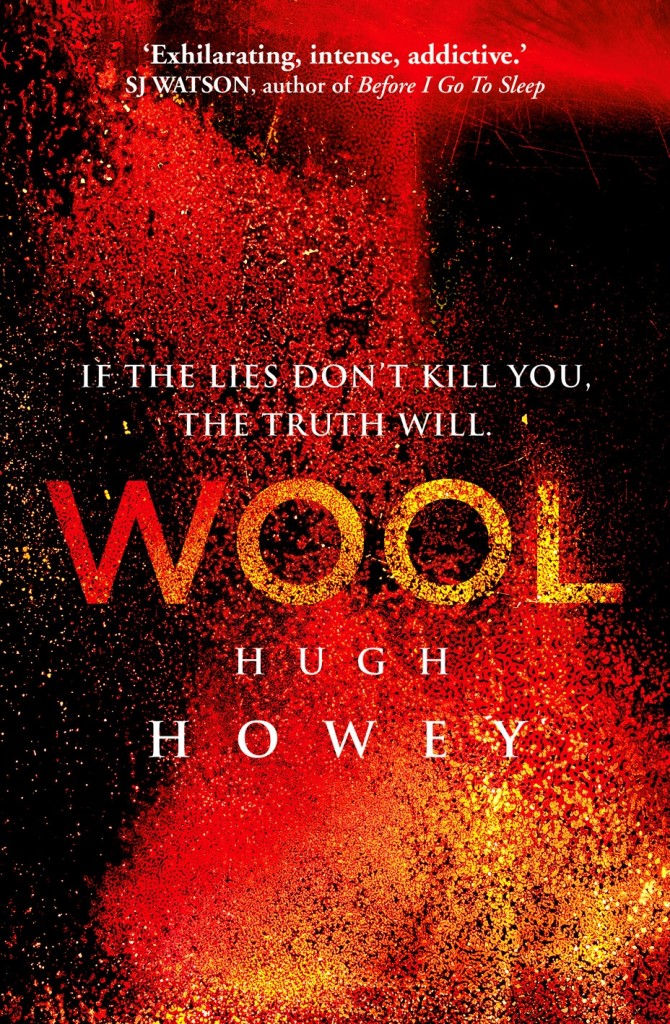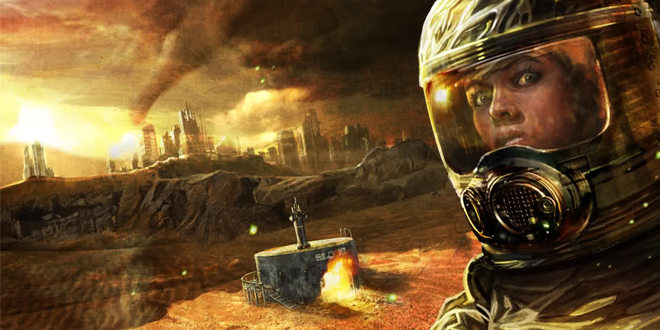Genre: Sci-fi e-book
Premise: Set during an unknown time, Wool follows a select group of workers inside an expansive 100-story underground bunker who begin to suspect that the world they live in is a giant lie.
About: Writer Hugh Howey initially wrote Wool as a stand-alone short story. He published the work through Amazon’s Direct Publishing system. After the story began to do well, he started writing more entries for it (the entries are now combined into a single book). 20th Century Fox bought film rights for the book last year, and Howey just signed a print-only deal with Simon and Schuster for half a million dollars.
Writer: Hugh Howey
Details: 530 pages
One of the things I’ve been keeping an eye on of late is Hollywood’s interest in self-published material. It used to be that, on the book end, there was only one chance of getting your work adapted. You had to get a book published! And to publish something, you had to crack into an industry that was just as hard to break into as this one.
Times have changed. The burgeoning E-book industry has allowed that “nobody” writer to finally bypass a system previously designed to keep you invisible. Having published an e-book myself (yeah, yeah, the physical copy is coming), one of the things that baffled me was how easy it was. I mean you literally go to Amazon, upload your document, and it’s on the site 6 hours later.
Now, of course, you still have to get noticed. You still have to find ways to get people to know about your book. But the tools are in place, especially with the pricing flexibility you have. You don’t need to compete with those huge books because you can price your book at 1/10 their price (99 cents), making it an easy gamble for hungry readers looking for something new to try.
Not to mention you’re not beholden to any page count. A lot of e-writers are selling serialized novellas, allowing them to write a quick 150 page book, charge 99 cents, gain some fans, then write three more 150 page novellas (each a dollar) to finish the series (which is similar to what Wool did). This is a great way for screenwriters to dip their toes into the medium and see if they like it.
I bring this all up because Hollywood is obsessed with adaptations. They want to see things proven before they take a chance on them. And this is a way for you to exploit that business model without having to convince a publishing industry to print half a million copies of your debut book. You can create a small tremor in the book world and turn it into a big splashy sale that way as opposed to the spec route. Which brings us to today’s book, Wool.
Note: Wool is the kind of story that plays best when you don’t know all its little surprises. I recommend you read it if you don’t want to know what happens. There will be spoilers below.
Wool is about an immense underground “silo” (almost 150 levels deep) that houses a community of people doing various jobs all focused on one thing – keeping the silo running smoothly. Although it’s never explicitly stated, it’s implied we’re in the far off future and that something terrible happened that destroyed the atmosphere and made earth inhospitable. In fact, if you’re lucky enough to be on the top floor of the silo, you can see giant monitors displaying the outside’s rolling lifeless hills, as well as the decrepit remains of a city in the distance.
The story centers around a young machine welder named Juliette who becomes an unwitting sheriff of the silo. She received the job after the previous sheriff was picked for the “lottery.” While winning the lottery may sound wonderful to you, the lottery of this world means you’ve been designated to clean the cameras outside the silo. Because the atmosphere is so harsh, this ensures your death, even with the most technologically advanced suits available. This is actually considered an honor in the silo. Wining the lottery allows you to do your duty for your people.
Anyway, while running across some of the old sheriff’s e-mails, Juliette finds out that he had begun questioning the purpose of the silo (a huge no-no in the community). Even worse, he found that some silo truths didn’t add up. Maybe the lottery wasn’t a “privilege” after all. Maybe it was a backdoor way for the silo leaders to get rid of those who were onto their secret? But what was it the silo leaders were covering up exactly? And why did all trails seem to lead back to IT, the secluded computer hub of the silo?
Juliette does some more digging and learns of something called “the uprising,” something that happened many years ago in the silence, and finds evidence that there wasn’t just one, but maybe many uprisings. Dozens! Her curiosity finally causes her downfall though, as IT catches her snooping, and announces she is the next “lottery” winner.
Before she goes down, Juliette learns that there is a much bigger world out there with many secrets, and that IT is entrusted with keeping those secrets. If she’s going to find out what those secrets are, and she’s going to survive “cleaning,” a procedure that not a single Silo member has ever survived, she’ll need to call on her friends, her unique skills, and her intelligence to identify exactly what this Silo is.
I mean, is it any surprise at all that I liked this? It’s right up my alley in just about every category. And I don’t know if Fox only bought it for a feature adaptation, but this would be an even better TV show. That’s all I kept thinking while I was reading it. “This is the next fucking Lost.” It’s got such a vast mythology (mythology I’m still learning about in the sequel, Shift) and such a great environment for characters, you could just see this thing taking over the geek community.
But this could just as easily be a film. And that’s one thing I admired about Hugh’s writing. Taking a page out of screenwriting books, he always kept the mystery high and the story moving. We always had a clear goal – much of which was based on Juliette’s desire to figure out what was really going on in the Silo – investigating mysterious murders, looking into mysterious e-mails, following up mysterious rumors.
That’s a great tip for all you young writers out there. Put your character in some sort of investigative position. That way, they’ll always have a goal. They’ll always have something to solve, something to look up, something they must find out. This keeps your character active and active characters are almost always the most interesting to watch. Wool doesn’t play nearly as well if, say, Juliette is a stay-at-home mom. She has no reason to investigate any of the cool stuff she had to investigate as a Sheriff. And if you DO send a stay-at-home mom off to investigate a bunch of things, you have a very confused reader on your hands wondering, “Uhhhh, why is she doing this?”
In addition to its TV and feature qualities, I also enjoyed Wool doing certain things you can only do in a book. For example, we originally start off following the sheriff (whose death Juliette looks into later). So he’s our main character. But then he walks outside for the lottery, experiences something mind-boggling, and dies. So our main character’s dead! Then in the next section, we meet the mayor, who we follow for awhile. She too starts to dig into some silo inconsistencies. She’s then picked for a cleaning and dies too. So our SECOND main character is dead. This finally leads us to Juliette, who becomes our hero throughout the rest of the book.
Now in retrospect, of course, this makes sense. Howey originally wrote this as a standalone short story. So the need for a new hero to replace the dead hero from that original novella was obvious. And he probably didn’t know yet if he was going to write an entire book, so again he followed that storyline to its logical conclusion, ending up in the dead Mayor. Once he realized he was going to turn this into an entire book, he knew the next hero would have to be the protagonist for good.
But I love reading stuff like this because it’s easy, after immersing yourself in screenplay land for years, to think the Hollywood beats are the only beats available. Try killing your main character off twice in a script. We wouldn’t meet the third real main character until at least page 40 and by then it’s too late to start your story.
But I still love seeing this because it REMINDS me that there are other ways to do it. You don’t HAVE to do it the way it’s always been done. I don’t know how you’d do two fake-out main character introductions in a major Hollywood movie but MAYBE it could be done with the right approach and the right writer. And knowing that’s an option, no matter how far-fetched, keeps you on your creative toes. You can do anything you want to with a screenplay. Wool reminded me of that.
Getting back on track, I just think it’s cool that these other options are popping up for screenwriters. You no longer have to have a best-seller to get your script adapted. Just put a great story up on Amazon. Heck, start with a simple short story and charge 99 cents. You could be the next High Howey!
[ ] what the hell did I just read?
[ ] wasn’t for me
[ ] worth the read
[x] impressive
[ ] genius
What I learned: People do judge a book by its cover. If you’re going to self-publish, pay the extra dough and get a professional cover done. I saw the old (before a publishing company came in) cover for “Wool” and I would’ve never read it off that cover. It just looked so cheap. The much more professional one I placed at the top of this review is actually how I first spotted the book. It got me to click on it, learn about it, and actually buy it.



